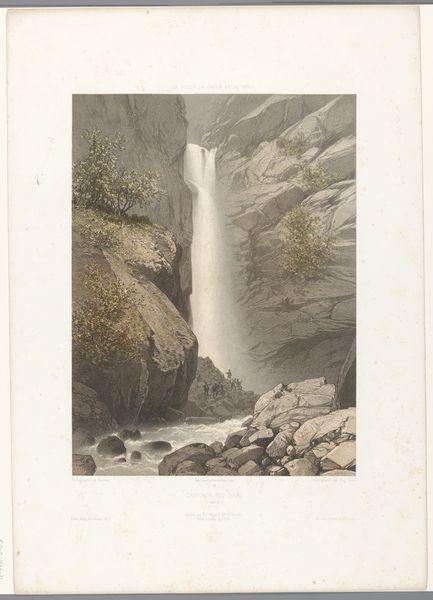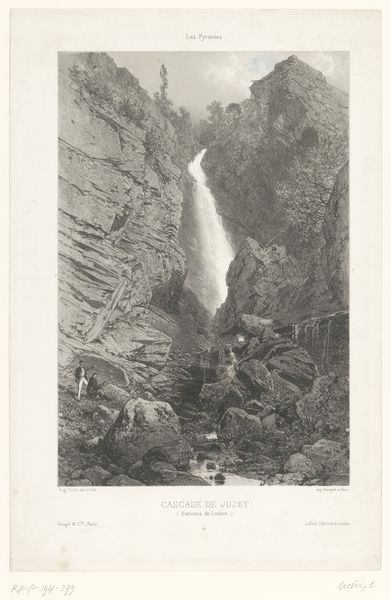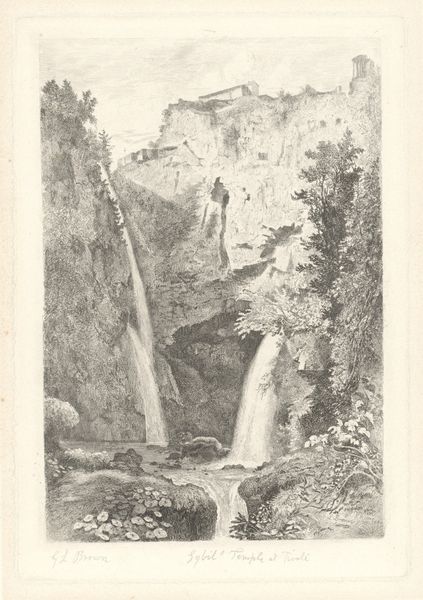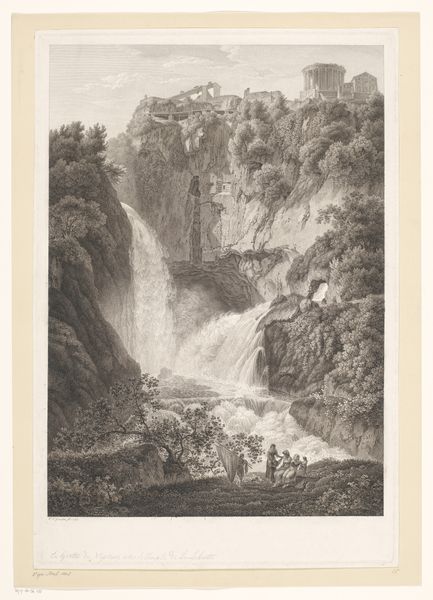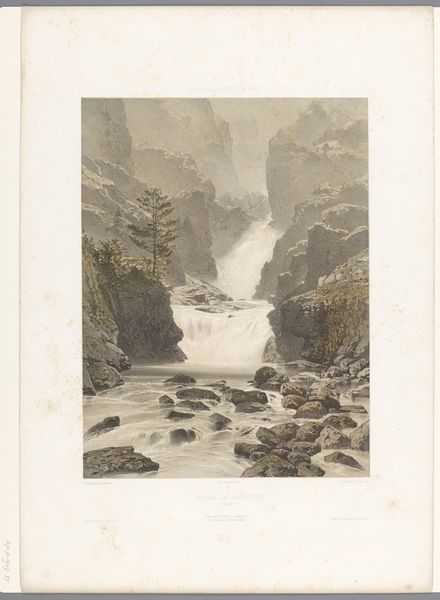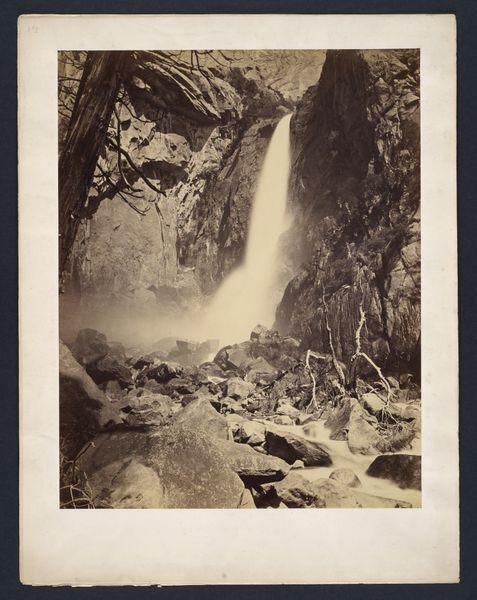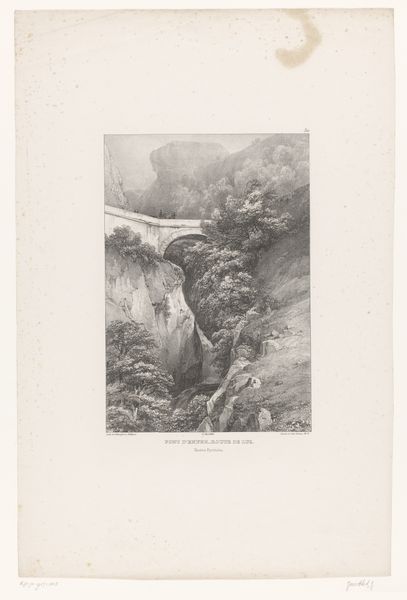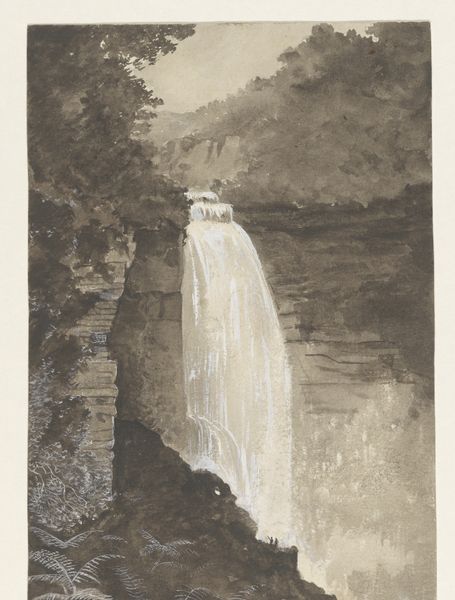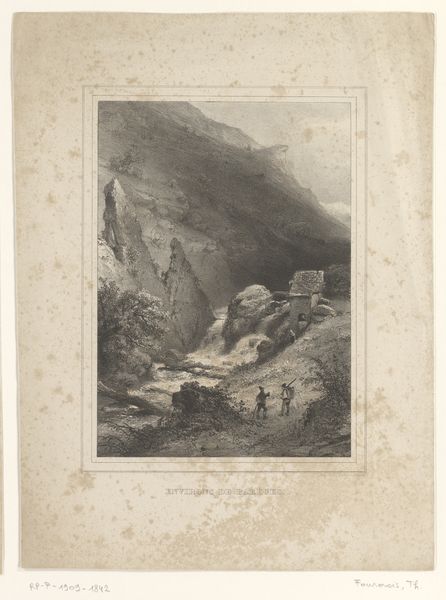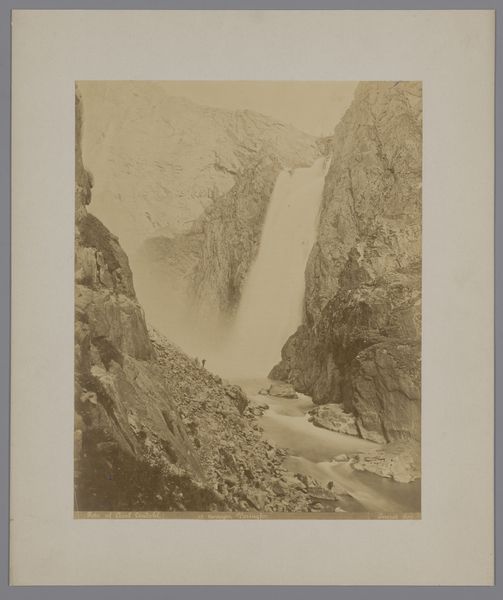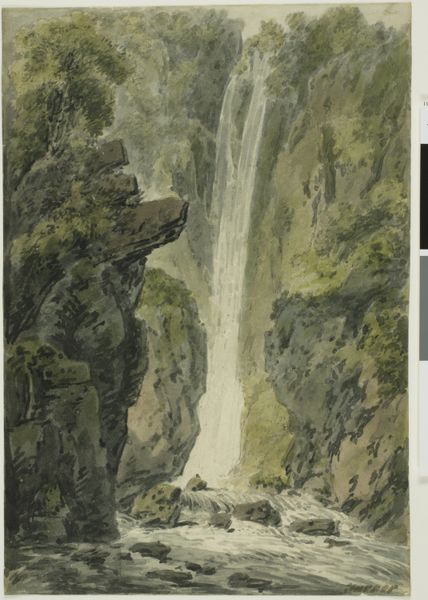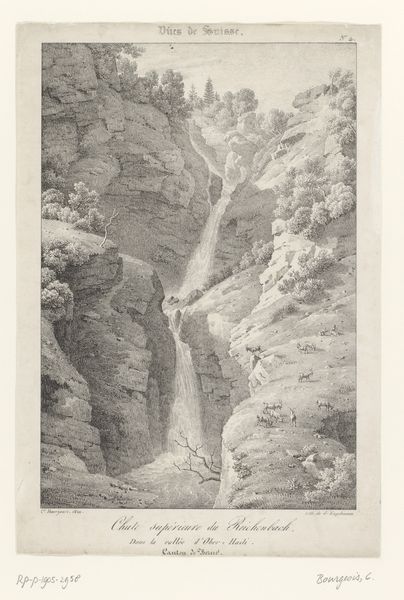
Dimensions: height 565 mm, width 400 mm
Copyright: Rijks Museum: Open Domain
Curator: Eugène Cicéri’s 1859 etching and engraving, "Zicht op de Pélerins-waterval," offers a view of the Pélerins Waterfall. The print, a landscape in the Romantic style, resides here at the Rijksmuseum. Editor: The sheer scale strikes me immediately. Look at the diminutive figures near the base of the waterfall; they are dwarfed, overwhelmed by nature’s grandeur. It’s dramatic! Curator: Indeed! The composition aligns perfectly with the Romantic era's fascination with the sublime. Consider how landscape imagery was used to stir feelings of awe, reflecting deeper anxieties around industrialization and societal changes. Editor: Yes, a visual statement, perhaps, about humanity's relationship with an imposing, perhaps indifferent, nature. The waterfall, rendered almost as a vertical slash, might even carry symbolic weight beyond just scenic representation. Water often represents renewal and purification but here, in this forceful cascade, also feels somewhat threatening. Curator: I agree. The iconographic potential is considerable. The scene invites reflection on the tension between humanity's striving for control and nature's untamable power. But also let's not forget the development of tourism. Landscape prints were widely circulated; images like this helped create a desire for experiencing these sublime vistas firsthand. Editor: An interesting point. One might even say the image normalizes a certain kind of engagement with nature as a tourist spectacle—a safe confrontation with a powerful force, but still mediated through leisure. Curator: Exactly! The print performs a very specific cultural function then, shaping perceptions, aspirations and expectations in a changing world. Editor: It has encouraged me to ponder the enduring power of such Romantic images to mold our sense of place and self. The symbols employed here persist. Curator: And it is important to remember that the meaning attached to these landscapes evolves within ever shifting social and political contexts.
Comments
No comments
Be the first to comment and join the conversation on the ultimate creative platform.
